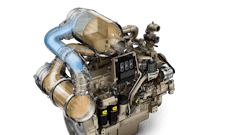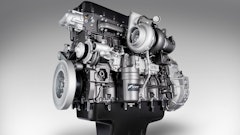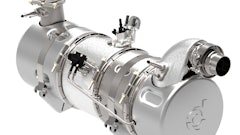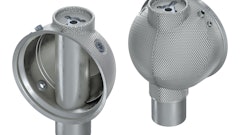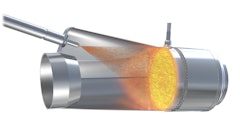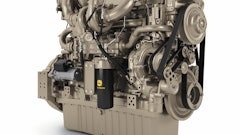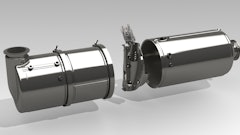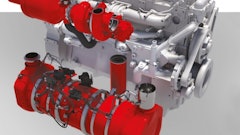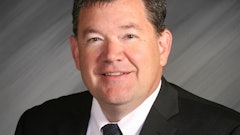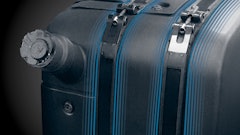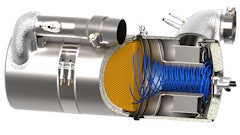A simmering environmental dispute could erupt into a full-scale election-year political battle that could have significant ramifications for farm, construction and other off-highway equipment.
At issue are the Environmental Protection Agency's proposed new standards regulating the amount of soot and other particulate matter allowed in the air. These are the standards states use to develop their emission control strategies, including retrofit programs and idling restrictions: the more stringent the standards, the more aggressive the regulators must be.
EPA is supposed to update air quality standards every five years, but has never met the mark. The current proposal will replace standards finalized in 1997. And while it would significantly tighten some particulate standards, Democrats and environmentalists have decried it as a major setback. Fireworks may fly in the public comment period this spring.
Particulate matter, or soot, originates from a variety of sources. A byproduct of combustion, it is generated by diesel engines, power plants, wood stoves and industrial processes. It also occurs naturally in the form of windswept dust from unpaved roads and tilled fields. Individual particles are very difficult to see without a microscope, but they collectively appear as black soot, dust clouds or haze. Studies have linked particulate exposure to aggravated asthma, chronic bronchitis, reduced lung function, irregular heartbeats and heart attacks.
EPA has been monitoring coarse particulates, those up to 10 micrometers in diameter (0.001cm) since the early 1980s. In 1997, the agency began focusing on fine particulates, which are 2.5 micrometers in diameter (0.00025cm) or smaller. These particles are 28 times thinner than the width of a human hair and can only be seen with an electron microscope. However, they are considered a significant health risk because their small size allows them to remain airborne for great distances. They can also get lodged in tiny recesses in the lungs, causing respiratory problems.
The EPA's decision to shift its attention from coarse particulate matter (PM 10) to fine particulate matter (PM 2.5) had a significant impact on the regulation of off-highway equipment. While most PM 10 comes from dust and other naturally occurring events, a significant portion of PM 2.5 comes from diesel-powered engines.
Tightening the current standards
EPA currently has an annual and a 24-hour standard for both PM 10 and PM 2.5. The 24-hour standard is the threshold individual states must meet in any given 24-hour period. The yearly average of these 24-hour periods cannot exceed the annual standard.
EPA's proposal would maintain the current annual standard for PM 2.5, which is 15 micrograms (0.000015 grams) per cubic meter, but would significantly lower the 24-hour threshold from 60 to 35 micrograms (0.000035 grams) per cubic meter.
Why then the concern among environmentalists? Because in formulating the final proposal, EPA didn't fully embrace the recommendations of the Clean Air Scientific Advisory Committee (CASAC), a scientific panel established by Congress to provide input to the EPA on these types of regulatory issues.
Even if EPA had adopted the most stringent standards in CASAC's range of recommendations, the air quality standards would only be 15% more restrictive than EPA's proposal. However, that hasn't kept critics from pouncing on the federal agency.
Does a political battle loom?
Sen. Barbara Boxer, D-California, has already accused the EPA and the Bush Administration of "gutting" the proposal and "stripping science from the process of setting health and safety standards." A spokesperson for the California Air Resources Board called it "outrageous," while others have been more conciliatory. NESCAUM, an association that represents air pollution control agencies in northeastern states, praised the EPA for its thorough analysis of the issues, but called the standards "insufficient."
In reality, EPA's proposal doesn't differ that much from the panel's recommendations. For example, CASAC recommended the daily standard be set at somewhere between 30 and 35 micrograms; EPA selected 35 micrograms, which is at the high end of CASAC's recommended range. CASAC also recommended lowering the annual standard to 13 or 14 micrograms; EPA elected to keep it at 15.
EPA contends a 14 microgram annual standard would be very difficult for states to achieve given the mobility of fine particulate matter. Because of their size, tinier particulate matter stays airborne longer and can easily cross state lines. That, says EPA, makes it difficult for individual states to develop effective control strategies.
The EPA is also drawing criticism for its proposed changes to the PM 10 standards, which cover coarse particulates that are 2.5 to 10 micrometers in size. EPA has proposed eliminating the annual standard for PM 10, saying there is insufficient evidence linking long-term PM 10 exposure to health hazards. However, EPA has proposed lowering the 24-hour standard from 150 to 70 micrograms per cubic meter, but plans to impose the 24-hour standard only in urbanized areas with populations of 100,000 or more people.
EPA says this approach will allow it to regulate airborne particles from paved roads, industrial processes and construction activities found in urban areas while not having to divert resources to monitoring rural areas, where the bulk of PM 10 consists of airborne soil particles generated by high winds or tilling. Critics are concerned this approach will leave rural counties with inadequate air quality protections.
The impact on existing equipment
How the proposal process plays out in a highly polarized election year could have significant ramifications for the off-highway industry. The stringency of the standards, which will take effect in 2010, will determine how aggressive state regulators must be in controlling emissions.
The farm and construction industries have come to grips with the higher costs associated with new engines and equipment because of Tier 1, Tier 2, Tier 3 and Tier 4 emission regulations. But the particulate standards will have a significant impact on existing farm and construction equipment. That's because "clean diesel" engines aren't coming off the assembly lines fast enough to achieve significant particulate reductions on their own. In fact, particulate-reduction technologies won't even be introduced on off-highway engines until 2011, one year after the new air quality standards are slated to take effect.
Given the durability of off-highway equipment, it will take more than a decade for these new engines to have an impact. During that time, there will likely be at least one more revision to the PM standards and history has shown that standards are always tightened, never loosened.
As a result, state regulators will be forced to focus on voluntary and non-voluntary retrofit programs, equipment restrictions on public projects and special regulations regarding idling and the use of equipment, especially in non-attainment areas.
Fortunately, there aren't many non-attainment areas outside of southern California and the East Coast. According to the EPA, there are currently 116 counties nationwide that are not in compliance with existing standards. More than 85% of these are located around major metropolitan areas in the East Coast and Midwest; the remainder are located in central and southern California. More than half of the states have no non-attainment areas at all.
Under the EPA's proposed standards, the number of non-attainment counties would jump to 191, many of them located in California, Washington, Oregon, Idaho, Montana and Utah. The standards would also impact counties in and around many of the major metropolitan areas east of the Mississippi River.
No one is sure how the process will unfold, or how much attention it will generate. Particulates aren't normally a very newsworthy topic, but the American public isn't especially fond of diesel, primarily because of the black smoke they've seen belching from older trucks and construction equipment. If environmentalists are successful in connecting that image to the particulate standards, and if politicians see this as an election-year opportunity, EPA may pressured to further tighten the standards. And that could mean big changes for people who build and use off-highway equipment.
Dave Jensen is a contributing writer based in Milwaukee, WI.





